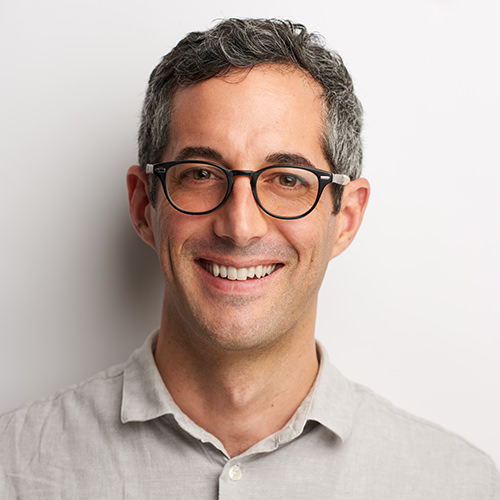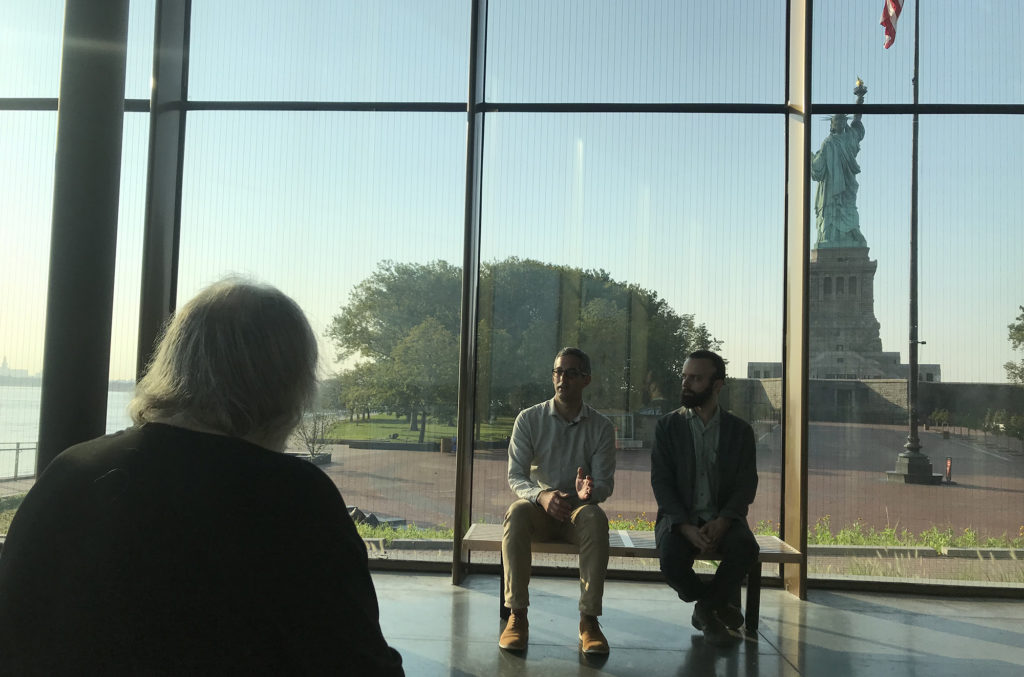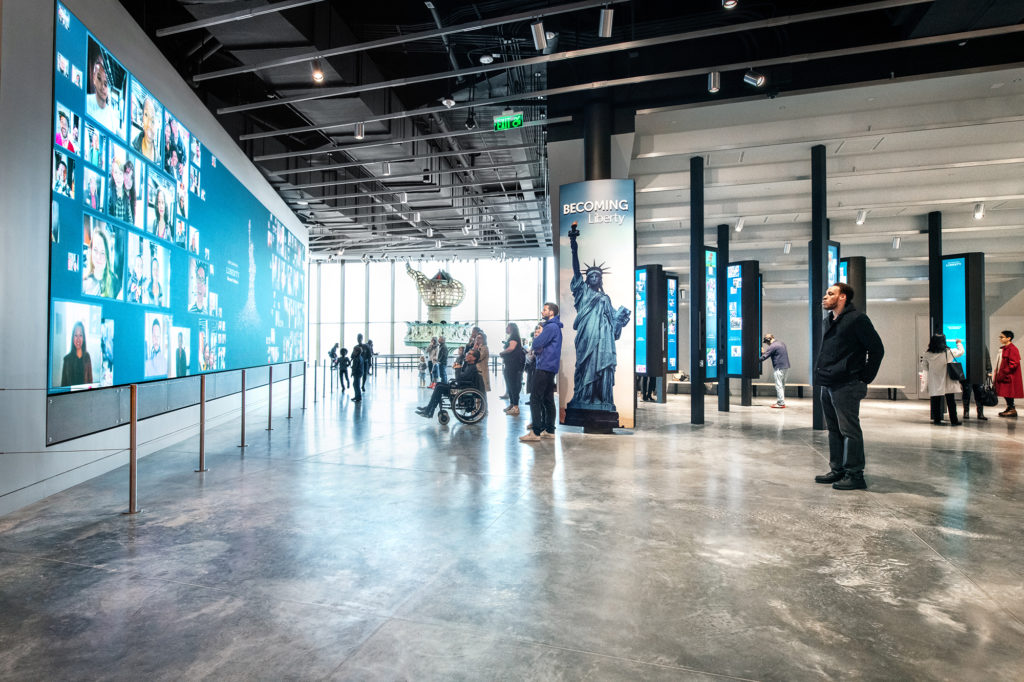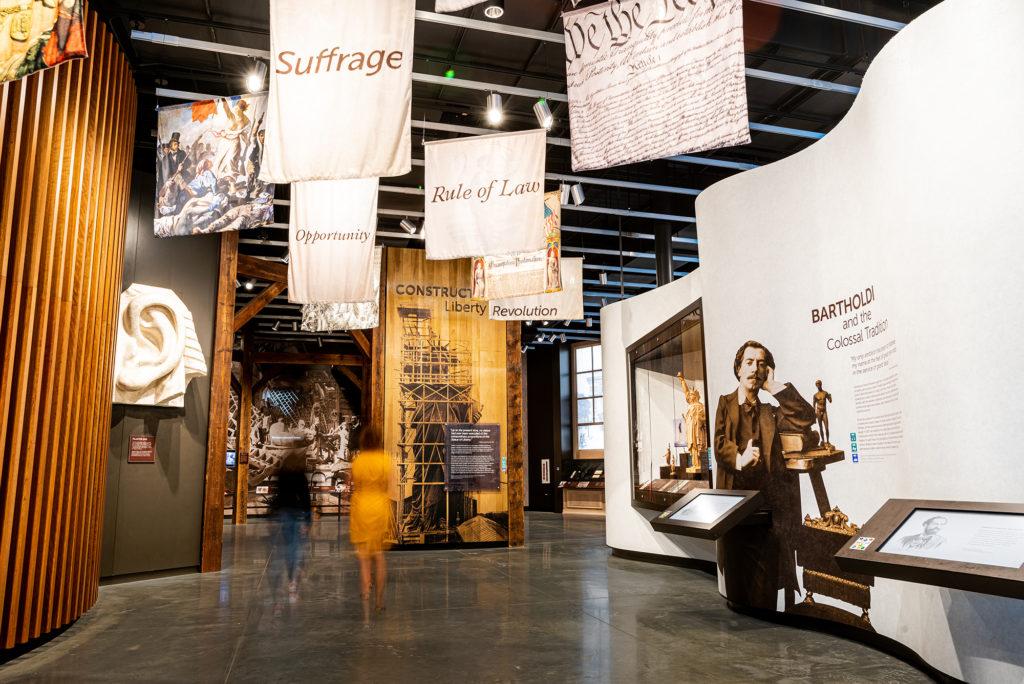Lads of Liberty: Nick Hubbard, Senior Content and Activity Designer at ESI Design
Posted November 22, 2019
In May 2019, the new Statue of Liberty Museum opened on Liberty Island with experience and exhibits by ESI Design. The new museum is part of a $100 million Liberty Island-wide beautification effort that is funded by our clients, The Statue of Liberty-Ellis Island Foundation.
To celebrate we’re sharing the stories of some of the talented people who have worked for over five years to bring this world-class museum from concept to completion.
In this edition, you’ll hear from Nick Hubbard, ESI Design’s Senior Content and Activity Designer who worked on the experience and exhibit design for the museum. Nick focused on everything from writing scripts for interactives to using artifacts to tell a compelling and nuanced story, becoming a “temporary expert” on all things Lady Liberty.
 Name: Nick Hubbard
Name: Nick Hubbard
Job Title: Senior Designer, Content and Activity Design
Years of Experience: 12
Age: 37
Nationality: United States
Languages Spoken: English
Education: B.A. English from the University of California at Berkeley, and a Masters from ITP (Interactive Telecommunications Program) at New York University’s Tisch School of the Arts
What was your first encounter with the Statue of Liberty?
Nick Hubbard, Senior Content and Activity Designer: Growing up on the West Coast of the United States, the Statue of Liberty was part of a distant, patriotic pantheon that included the Lincoln Memorial and Washington Monument. I had a vague sense that I might visit someday, fulfilling a sort of civic duty. It was all very impersonal!
Then, in 2014, I moved to New York. Only after landing did I learn of family who had come through Ellis Island and lived in the city in the late 1800s. Liberty would have been the most prominent feature on their horizon. This new knowledge caused a shift in me. With a very immediate sense of gratitude I made a pilgrimage on the ferry to both Liberty and Ellis.
What was your role on the project? What did that mean for you day-to-day?
NH: I was one of the stewards of the Statue’s story and an advocate for the audience that would be visiting the new museum. I came onto the project as a Content & Activity Designer when many of the key themes and narrative threads had already been established through years of collaboration between ESI Design, the National Park Service, the Statue of Liberty-Ellis Island Foundation, and a group of expert scholars, the History Advisory Committee, chaired by Alan Kraut of American University. It was my task to ensure that these foundational ideas made their way into the innovative experience that was ultimately constructed within the museum.
With such immense responsibility, it was crucial that I became a temporary expert myself in a very short time. Every day on the project meant diving deep into research about the Statue of Liberty, so I could come up-to-speed on the latest historical interpretations, survey the landscape of cultural representations, and understand the possibilities for telling a compelling story.
That research fed right into design and production. Throughout the process I might find myself writing scripts for interactives, giving notes on the rough cut of a film, or making selects of images for hanging banners. I debated in meetings about language – what words are appropriate to evoke Liberty? I tested the steps on touch screens – will these instructions make sense to students? A good analog for my role might be that of a dramaturg in theater: a combination of scholar, writer, editor, and director.
Part of the joy in such interdisciplinary work was the ways it intersected with all the creative partners on the project. From filmmakers at the History Channel and Donna Lawrence Productions to the content team at History Associates, the creative technologists at Float4 and sound designer Jeremy Bloom, I was able to collaborate with some of the most multi-talented professionals working in the field today.

You just opened a new museum for the Statue of Liberty — how does that feel? What does that mean to you?
NH: In describing his approach to monumental works, the Statue’s sculptor, Frédéric-Auguste Bartholdi, said, “the immensity of form should be filled with the immensity of thought.” Those words now greet the millions of visitors who step through the doors of the Statue of Liberty Museum.
Making Liberty’s story accessible in a new way to all of those people was an immense undertaking. Having played a small part, I feel immense pride. There were several moments when I was absorbing the stories of immigrants like my ancestors, through their letters (artifact reproductions), their memories (in audio recordings), and their emotions (in footage of arrivals in New York harbor), that this pride had a deep personal tenor.
Why is having a museum dedicated to the Statue of Liberty important?
NH: This is nearly the same question that was asked by some skeptics in France and America who wondered why either country should fund the construction of the Statue of Liberty and its pedestal. The answer for those who conceived of Liberty arose from the monumental import of a country established on a set of noble ideals and the continuing struggles in the United States to realize those ideals for all its citizens. Such a legacy required a powerful symbol. Citizens of every walk of life agreed and came together to raise the money that was needed.
130 years later that powerful symbol must be preserved. A dedicated museum allows visitors to understand the Statue’s legacy, from its historical complexity to its present significance, and invites them to consider how the can participate in Liberty’s future.

After working on this project, has your concept of liberty evolved?
NH: Liberty has become present tense for me. Considering how visitors from all walks of life would conceive of the term and the ideals behind it pulled it out of history and made its relevance for this moment, for all of us right now, very clear.
What were the steps in your journey to this iconic project?
NH: A few years ago, I was working on new content for the Edward M. Kennedy Institute for the U.S. Senate in Boston; that was my first direct introduction to ESI Design. When I joined the studio, my blend of experience in interactive design, multimedia storytelling, and history education made me a good fit to continue the endeavor that had been initiated by our team of amazing designers.
Since you started your career, what’s the biggest change you have seen in the world of design?
NH: Many of our other featured lads and ladies have spoken about technology, and I agree that’s the most notable change. Beyond that, two other things have stood out to me: first, every design has become “an experience”, and second, every designer has become “a storyteller”.
While these terms have become cliched, and I don’t believe they apply to all design, they do reflect a call from clients and audiences to provide a deeper level of engagement than may have been common in other moments. Those of us who’ve focused our careers on creating experiential stories have been more than ready to answer that call.
What advice would you give to your younger self starting a career in design?
NH: Be prolific. Find a mentor. Be prepared for uncertainty.
If you were giving a tour of the new museum, what would be your top highlight?
NH: During the late stages of this project, we were having a meeting, and the historical reasons for proposing a statue devoted to liberty came up. A few people in the room were incredulous when they heard that Édouard de Laboulaye was a staunch abolitionist and wanted to celebrate the end of slavery through the gift of a monument. “What? I had no idea! Why don’t more people know that?”

There are several places in the museum that address this aspect of the Statue’s symbolism, and also how Liberty relates to struggles for justice and rights that have been ongoing since the 19th century. Since these are not what’s familiar to most visitors, I would make sure to highlight them.
You can read more about this aspect of the museum in Smithsonian Magazine.
About ESI Design
ESI Design transforms places into dynamic experiences that engage audiences, solve complex challenges, and deliver lasting results. From our roots reinventing the Brooklyn Children’s Museum into one of the country’s first interactive museums, ESI Design has defined the field of experience design for over forty years, fundamentally changing how people connect with brands, organizations, cultural institutions and, most importantly, each other.


Join The Conversation